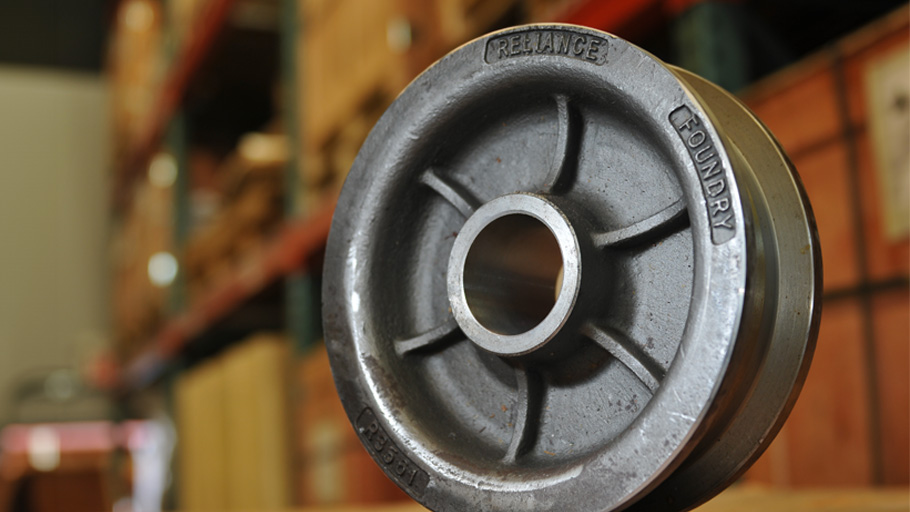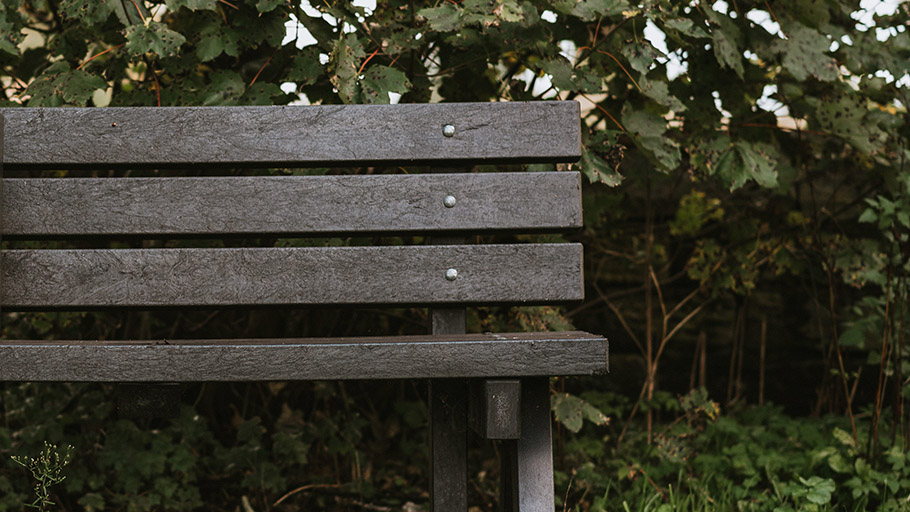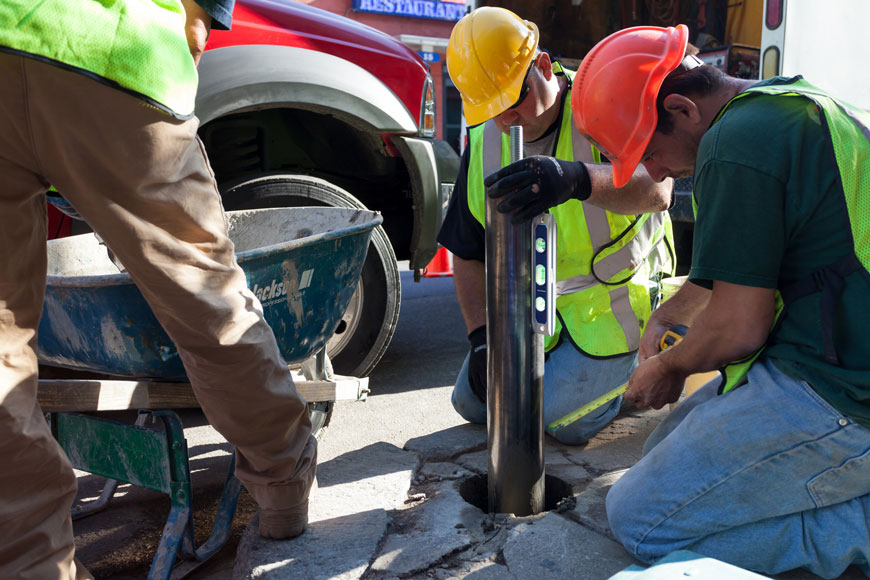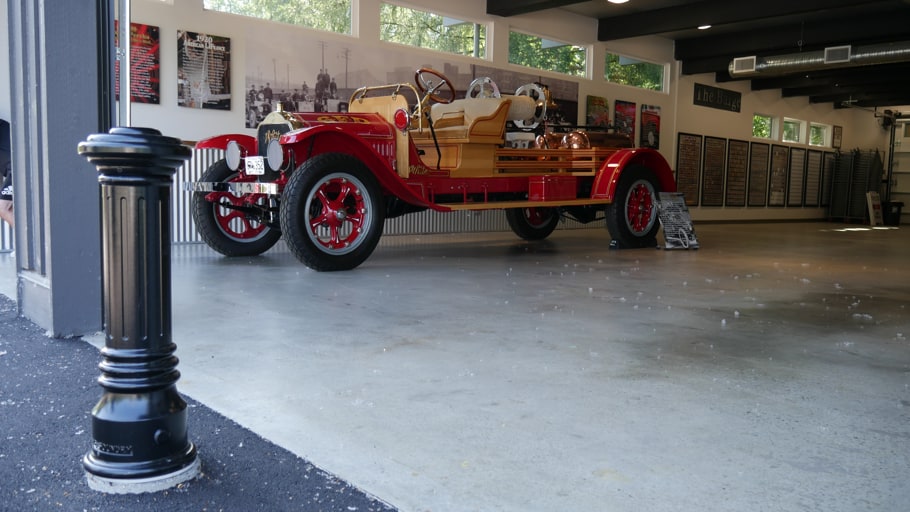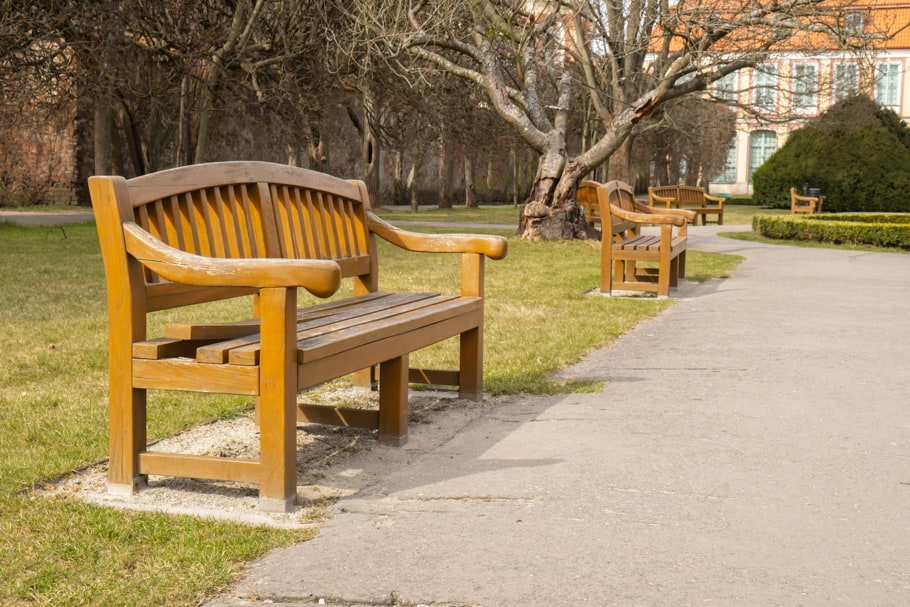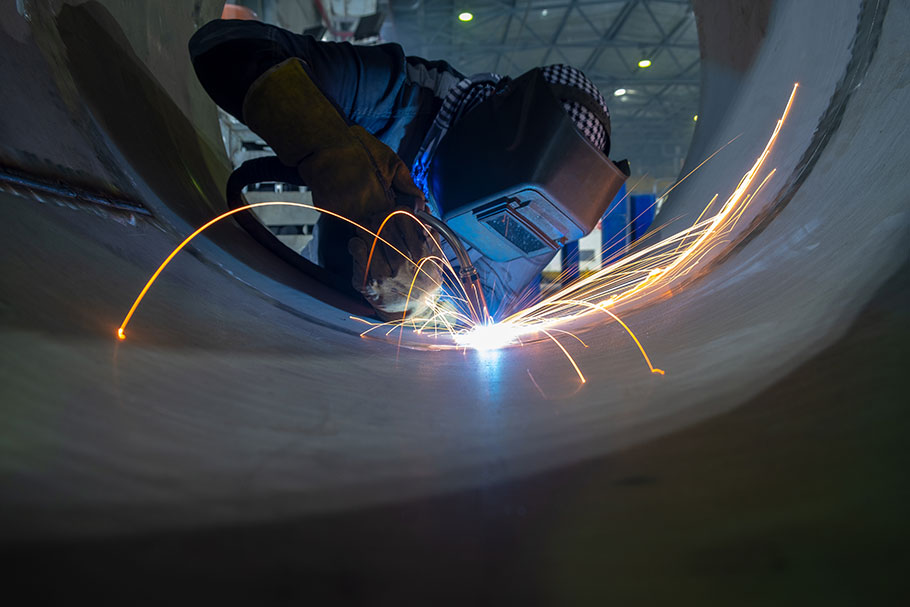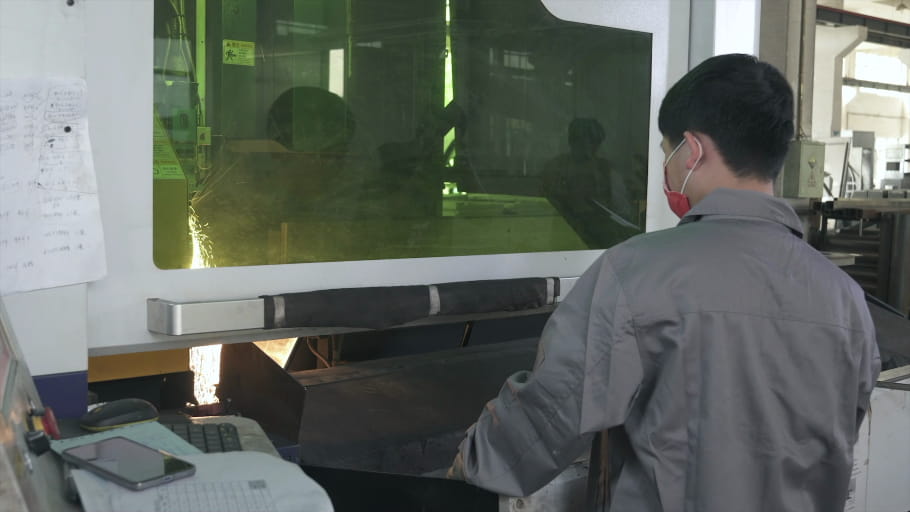Protect stainless steel from rust using proven cleaning methods and passivating treatments
Stainless steels are highly corrosion resistant—however, stainless steel applications can still remain at risk to surface damage. Oxidation, corrosion, rusting, or staining can occur over the long-term in harsh environments without routine cleaning and maintenance. Repeat mechanical damage also contributes to a faster degradation of the metal.
All stainless steels contain at least 10.5% chromium by weight. It is this chromium content that creates a shield called the passive layer, which protects stainless steel from corrosion—unlike other steels. The higher the chromium content, the greater the corrosion resistance. Stainless steel rusting occurs when the passive layer is damaged and there is not enough chromium for it to reform.
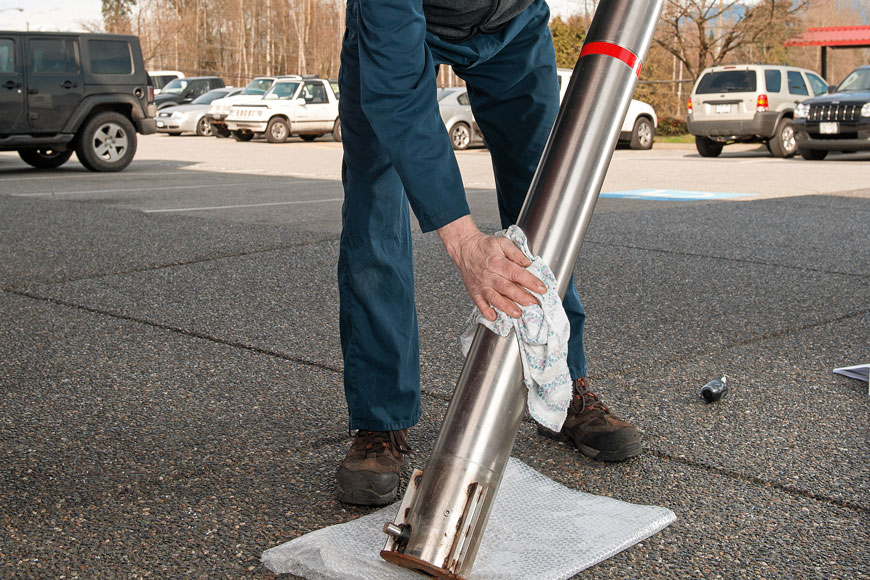
How does the passive layer work?
The passive layer is created as the chromium content in the stainless steel’s surface reacts to oxygen. The passive layer acts as a protective barrier, preventing further oxidation of the stainless steel. In comparison, ordinary carbon steel surfaces form ferric oxide when exposed to oxygen. Ferric oxide does not form a continuous layer, so it eventually spalls off, leaving raw steel exposed and prone to a destructive rusting cycle.
The passive layer of stainless steel is self-repairing. If it is damaged, chromium in the exposed stainless steel will react with oxygen to form new chromium oxide. As long as there is sufficient chromium present, the chromium oxide layer will continue to reform and protect the stainless steel surface.
Causes of stainless steel corrosion
Chromium can protect stainless steel if the localized concentration is 12% or higher. Anything reducing the localized chromium concentration below the 12% threshold will cause staining or rust. Common causes of stainless steel corrosion include chlorides, hydrochloric acids, sulfuric acids, iron or carbon steel contact, and high temperatures. There are over 150 grades of stainless steel, and some are more prone to corrosion than others. The corrosion resistance and other useful properties of stainless steel are enhanced by increasing the chromium content, or by the addition of other elements such as molybdenum, nickel, and nitrogen.
Chlorides
Chromium oxide is particularly vulnerable to chlorides. Corrosion is accelerated in coastal areas with salt-spray exposure, and in areas where de-icing salts are used during winter. Components for the chemical and food industries have high chromium content to compensate for regular exposure to chlorine, salt, and other corrosive substances.
Acids
Strong acids destabilize the passive layer. When stainless steel is exposed to hydrochloric and sulfuric acids, general surface corrosion can occur. Hydrochloric acid is extremely acidic and used in plastic production. Diluted hydrochloric acid is found in descaling agents for removing limescale. Sulfuric acid is a corrosive chemical that can cause severe chemical burns and secondary thermal burns. It is used in mineral processing, oil refining, and wastewater processing. More diluted formulas are found in household products such as drain cleaners.
Iron and carbon steel particles
Stainless steel corrosion can also be triggered by contact with iron or carbon steel particles. Trace particles from iron or carbon steel will rust stainless steel surfaces. If left unattended, rust spots may compromise the chromium oxide surface and evolve into localized corrosion such as pitting. Contamination occurs when stainless steel is subject to sparks or particles from nearby welding, cutting, drilling, or grinding of carbon steel.
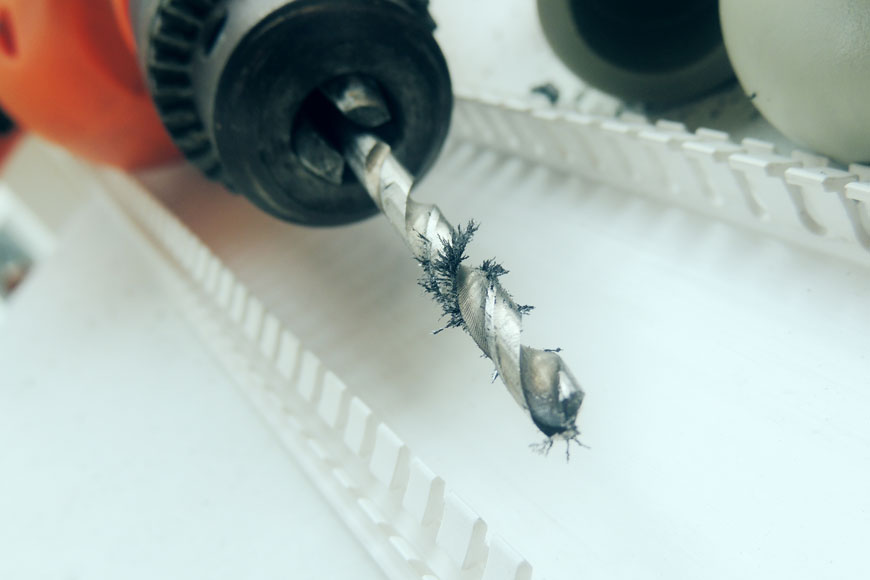
High temperatures
A less common form of rusting occurs after the stainless steel has been exposed to very high temperatures in the 750–1550°F range. This type of corrosion is found in welding applications in which stainless steel is heated and then cooled. Sensitization can occur, where the carbon and the chromium bond to form carbides. This causes the grain boundaries to become chromium deficient, and the chromium oxide layer becomes discontinuous. Heat sensitization runs the risk of ruining stainless steel forever. However, the damage can sometimes be mitigated with heat treating.
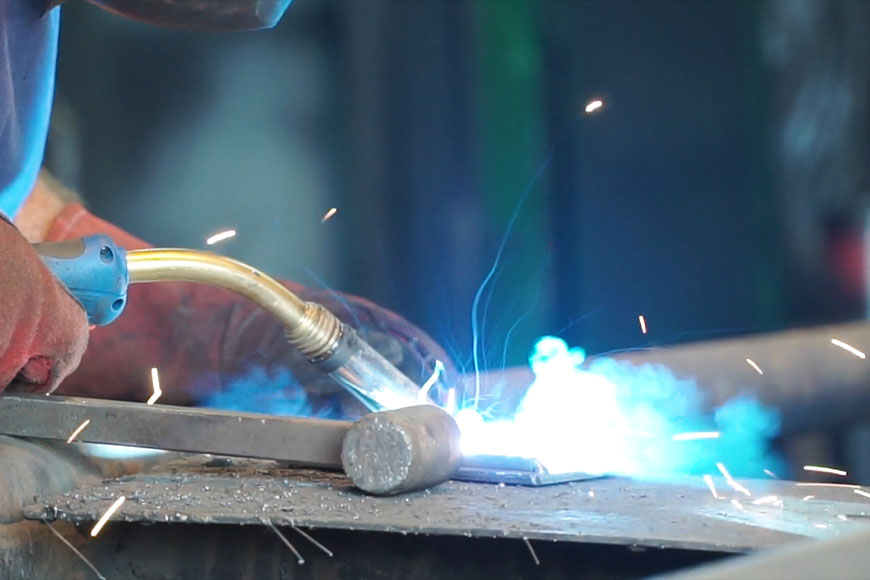
Handling stainless steel
The service life of stainless steel can be extended by preventing contact with corrosive substances. Follow best practices when working with stainless steel:
- Always wear clean gloves.
- Always use stainless steel tools and components.
- Avoid any contact with carbon steels or iron.
- Do not weld, cut, drill, or grind carbon steel near stainless steel.
- Avoid contact with concrete detergents.
- Avoid contact with chloride solutions.
- Do not use steel wool or other abrasive scrubbing pads.
The most common mistake people make is using a corrosive product to clean stainless steel surfaces. Never use the following products on stainless steel:
- Chloride cleaners
- Abrasive cleaners
- All-purpose cleaners
- Chloride bleach
Routine stainless steel cleaning
Stainless steel must be cleaned regularly to preserve the metal’s integrity and maintain a pristine appearance. With proper care, and by selecting an appropriate grade, stainless steel can be saved from corrosion. When stainless steel maintenance is neglected, corrosive substances can accumulate on vulnerable surfaces.
Regular maintenance for stainless steel (recommended every 6 months):
- Begin by gently scrubbing away any accumulated dirt or grime using a soft nylon brush.
- Next, cleanse the surface using a mild soap or detergent that is safe for stainless steel.
- Thoroughly rinse the stainless steel with clean water to remove any residue.
- After rinsing, ensure the stainless steel is completely dry. You can use a soft cloth, disposable wipe, or even an air blower to achieve a dry surface.
Stainless steel care and maintenance may require the use of harmful chemicals. Follow all safety instructions provided with cleaning or polishing agents. Ensure personal protective equipment is worn in accordance with occupational health and safety guidelines.
Specific stainless steel cleaning
When stainless steel has become extremely dirty with signs of surface discoloration or corrosion, routine cleaning may no longer suffice. Cleaning methods designed to tackle specific types of damage are listed below.

Fingerprints
- Clean with soap or detergent and warm water.
- Commercially-available solutions or hydrocarbon solvents can also be used.
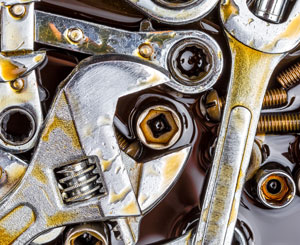
Oil and grease marks
- Use isopropyl alcohol, acetone, or methylated spirit.
- Apply solvent several times with a clean, non-scratching cloth until all marks are removed.
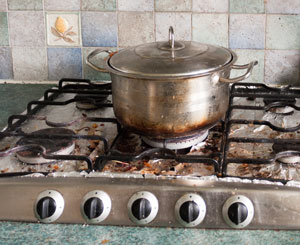
Burnt-on stains
- Soak in hot water and diluted ammonia or detergent.
- Remove grime with a nylon brush.
- If needed, use a fine abrasive powder but be careful not to scratch polished surfaces.
- Rinse thoroughly with clean water.
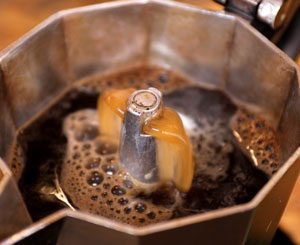
Discoloration, coffee and tea stains
Discoloration
- Use mild, non-abrasive cleansers.
- Apply with a soft cloth or sponge
- Rinse thoroughly with clean water.
Coffee stains
- Soak in sodium bicarbonate solution (baking soda and warm water).
Tea stains
- Soak in sodium carbonate solution (washing soda and warm water).
If the object is too large to soak, use a sponge or a soft cloth.
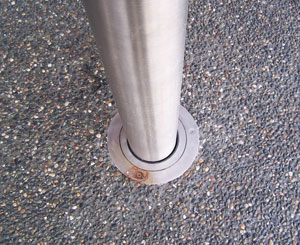
Localized rust stains
- Use a soft cloth to apply an oxalic acid solution.
- Leave the solution on the surface for a few minutes to dissolve contaminating particles.
- Rinse away all residual solution with clean water.
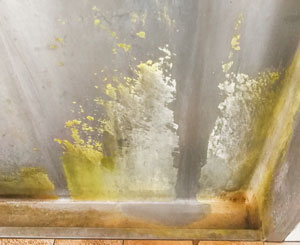
Limescale, cement and mortar splashes
Limescale
- Dilute one part vinegar in three parts water and apply with a nylon brush.
Cement and mortar splashes
- Rinse splashes off immediately.
- Use a 10%–15% phosphoric acid-based solution in warm water.
- Spread cleaner evenly, wait 30–60 minutes, then neutralize the acid with an alkaline cleaner or diluted ammonia.
- Rinse with clean water.
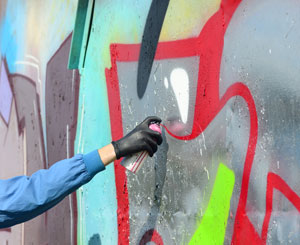
Graffiti
- Use biodegradable graffiti-cleaning sprays or wipes.
- Avoid using knives or hard scraping tools to prevent damage to stainless steel surfaces.
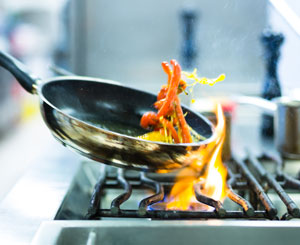
Heat stains
- Use a domestic metal polish (chrome polishes for automotive parts are widely available and effective).
- Treat the entire stainless steel surface to avoid discolored patches.
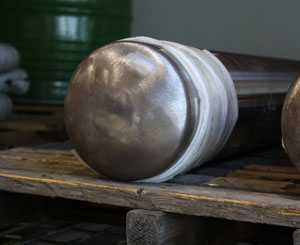
Structural damage
- Structural damage includes any visible dents, cracks, and breaks.
- Heavily damaged products should be removed from service until a repair or replacement can be made.
- To prevent worsening of damage, any significant rust should be removed as soon as possible.
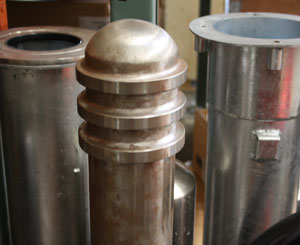
Corrosion
Minor corrosion
- Use an all-purpose lubricant, such as WD-40, to wipe affected area.
- Rinse thoroughly with clean water.
Moderate corrosion
- Use a phosphoric acid-based stainless steel cleaner such as E-NOX CLEAN.
- Spread the cleaner evenly, leave on for 30–60 minutes, then neutralize the acid with a spray-on alkaline cleaner such as UNO S F.
- Wipe the surface clean with a paper towel.
- Rinse thoroughly with clean water.
Severe corrosion
- Consult a professional service provider (severe rust treatments are highly corrosive).
- Once treated, stainless steel can be passivized with mild nitric acid.
Passivation procedure
A clean stainless steel surface can be re-damaged through mechanical means, extreme heat, or chemical damage. When this happens, iron is exposed, and the material is once again subject to rusting. Passivation may need to be performed on a regular basis to prevent rust. Passivation maximizes the inherent corrosion resistance of a stainless alloy.
Ideally, the passive layer will develop immediately after machining or passivation to completely cover the stainless steel surface. In reality, particles and contaminants are likely to adhere to the surface. If they are allowed to remain, these foreign particles reduce the effectiveness of the original protective film. Passivation is needed to maximize the natural corrosion resistance of stainless steel and remove surface contamination.
A two-step passivation procedure provides the best possible corrosion resistance:
1) Cleaning
The stainless steel part must be thoroughly cleaned. Stainless steels cannot be passivated unless the surface is clean and free from contamination and scale. In extreme cases, foreign matter may have to be removed by grinding or mechanical abrasion, or by pickling before passivation can take place.
2) Passivating treatment
The stainless steel part is immersed in a passivating acid bath. Any one of three passivating approaches can be used: nitric acid passivation, nitric acid with sodium dichromate passivation, or citric acid passivation. The passivation treatment varies depending on chrome content and machinability characteristics of the stainless steel grade, as well as the prescribed acceptance criteria.
Extending stainless steel’s lifespan
Proper routine care, and specialized cleaning for more serious problems, can extend stainless steel’s lifespan and ensure that applications operate smoothly. Although stainless steel’s built-in chromium content works to guard against corrosion, relying on this alone is insufficient. Exposure to chemical solutions, weathering, salt, or mechanical damage—all contribute to the need for routine passivating treatment. Passivation procedures and correct cleaning methods help stainless steel continue to shine as one of today’s most versatile materials in the commercial and industrial world.


